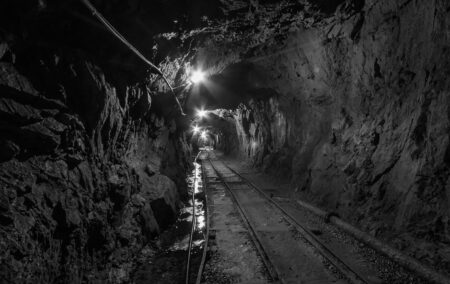South Africa’s mining industry will lose ground if it fails to take full advantage of the country’s substantial geological endowment – and rich opportunities loom in the gathering international trend of carbon-emission reduction.
Recent innovations in the electric vehicle (EV) industry indicate a coming shift from catalytic converters, which use platinum, to battery-powered vehicles, which use lithium. Additionally, the 2017 World Economic Forum documents international trends in curbing carbon emissions. These trends have prompted policies to ban the production of diesel and petrol vehicles – as soon as 2032 in Scotland, and by 2040 in France and the United Kingdom. China is also expected to ban combustion-engine vehicles soon.
So, what happens to the South African mining industry when EVs lead a move away from catalytic converters to lithium? Diminishing demand for platinum could inflict harm on South Africa’s mining industry as the world shifts to greener technologies. Unemployment levels could skyrocket if struggling mines were compelled to lay off thousands of workers. The resultant political and economic instability would be a further deterrent to investment in an already emaciated economy.
But, in the face of the risks arising from such volatility, strategies for improving the mining industry’s health are an attainable way to boost South Africa’s poor growth prospects.
One option is exploiting South Africa’s untapped lithium mining potential, and thus capitalising on the growing EV industry. Lithium is a compound found in heavily-salted water or brines, which South Africa’s more than 2 500 km of coastline, as well as other salt-water bodies, could yield. Moreover, across the border, Zimbabwe’s successful lithium mining has placed it within the top 10 producers of lithium in the world. A further opportunity lies in the wealth of cobalt deposits in South Africa, acknowledged by Glencore, given that cobalt is also a valuable component in lithium batteries.
South Africa’s wealth of untapped mineral potential, from some of the largest undeveloped zinc orebodies globally, to nickel, copper, chrome, and manganese, highlights the many difficulties the country’s mining sector faces in deriving the fullest benefit from these resources.
Another option – which could be vital in sustaining the health of the platinum sector – is to be found in developing hydrogen fuel cell technology. Although the production of EVs has been readily embraced by several countries, competition spurs innovation, and this has given rise to Fuel Cell Electric Vehicles (FCEVs), a notable competitor to mainstream EVs.
FCEVs use platinum catalysts and run on hydrogen, rather than lithium-ion batteries, making them more environmentally friendly. South Africa’s mining industry has a unique and valuable opportunity to meet the demand created by the competing vehicle, since its platinum supply is the largest in the world. Although FCEVs are not expected to flourish in the short-term, given its rival’s more immediate success, if this technology takes off, South Africa’s platinum reserves would be much in demand, and platinum mining would flourish.
There are some promising signs for FCEV technology. FCEVs are more efficient, and are better candidates for automation, which may ultimately lead to more buy-in. Already, Anglo-American Platinum and Shell have partnered to investigate the logistics of hydrogen-fuelled vehicles and have leased a Hyundai ix35 Fuel Cell for four years in London. This FCEV has already outperformed its petrol- and battery-powered counterparts in terms of travelling distance and fuel efficiency.
The possibilities for this technology go beyond commercial vehicle production. Anglo-American Platinum has recognised that South African mining has a technological base which could benefit from this kind of innovation, as using automated vehicles in mines would lower the safety risk associated with mining. This increased safety and efficiency could lead to greater investment, which would guarantee the mining industry’s longevity.
Matching the demands created by innovative technologies could be the catalyst of a mining renaissance in South Africa. To strengthen and grow our mining sector, there needs to be greater understanding of technology and how to use it to our advantage. Greater coordination is needed between the manufacturing and mining sectors, as well as international and local enterprises, in using technological innovations where they are most needed.
In a bleak economic environment of rising unemployment, floundering parastatals, corrosive corruption, and socio-economic volatility which repels investment, South Africa desperately needs an economic resurgence. And the mining industry could provide it.
New technologies are ready to provide the demand. South Africa needs to encourage the exploration – and exploitation – of resources such as lithium, or using existing platinum operations to support the growth of hydrogen-fuelled FCEV technology. Taking either opportunity could provide a lifeline to the industry, and contribute to an investor-friendly environment which supports further innovation in the mining sector.
South Africa cannot afford to be left behind. Redirecting the national focus, technologies and resources toward the mining industry could generate a sorely needed economic boost.
Katherine Brown is an intern at the Institute of Race Relations.

